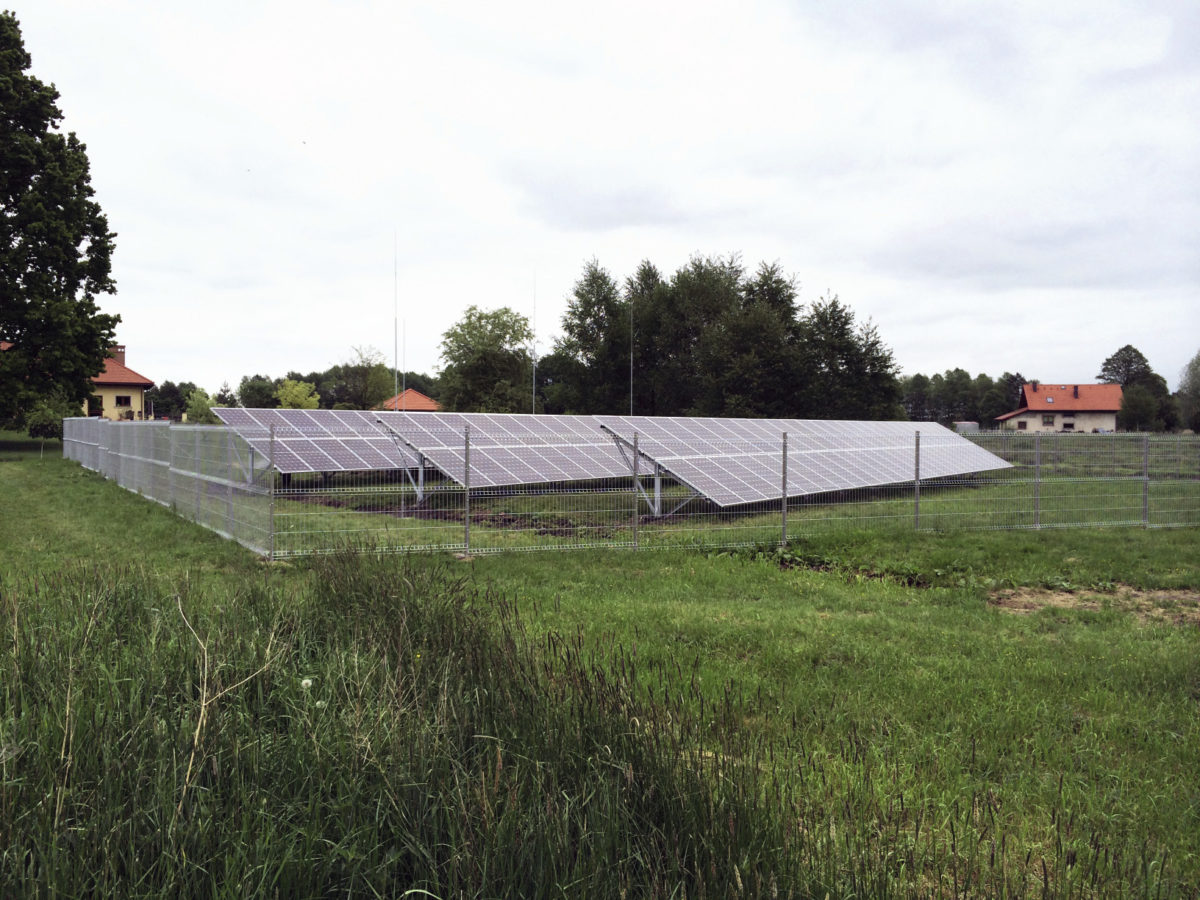A simulation of the upcoming tenders for wind and solar projects in Poland, conducted by the Polish Wind Energy Association, PwC and the law firm K&L Gates, has shown that bids for solar projects are slightly higher than those submitted in the country’s previous two renewable energy tenders.
According to Piotr Pająk from news site Gramwzielone.pl, dedicated to renewable energy professionals and investors, the simulation has shown that, in the auction round for wind and solar projects exceeding 1 MW, the maximum bidding price was 292 PLN (US$79.2)/MWh, while the maximum bidding price for the auction round for wind and solar up to 1 MW was 380 PLN ($103.0)/MWh.
Furthermore, Pająk revealed that minimum and maximum prices for solar in both auction rounds were 350 PLN ($94.9) and 411 PLN ($111.4)/MWh, respectively, while minimum and maximum prices for wind were quite a bit lower, at 225 PLN ($61.0) and 350 PLN ($94.9)/MWh, respectively.
A comparison is only possible with the previous two mixed solar-wind tenders held by the Polish government, which were only devoted to projects up to 1 MW, and were dominated by solar. In the first auction, 84 offers with a combined capacity of around 70 MW were submitted, while bidding prices ranged from 254 PLN to 409 PLN/MWh. In the second auction, some 352 projects were awarded, totaling approximately 300 MW, with prices ranging between 195 PLN and 399 PLN/MWh.
For both categories, real auctions should be held somewhere between November and December, according to Pająk. The auction for wind and solar projects over 1 MW, which may see the allocation of around 750 MW of capacity, will make 45 TWh of energy available for a maximum budget of 15.75 billion PLN, while 16 TWh of energy, and a budget of 6.2 billion PLN, will be made available for projects up to 1 MW.
“As for auctions dedicated to projects bigger than 1 MW, wind is still most competitive and should embrace all support in 2018 auction,” Pająk told pv magazine. “However the restrictions in development of new wind projects were implemented into Polish law in 2016, and since then there are no new wind projects being developed,” he said. This lack of new wind projects may also make some room for bigger PV projects in next auctions for projects exceeding 1 MW, according to him.
The government and Polish electricity system operator, PSE recently said there is a need in the country’s electricity system for around 2 GW of PV, which should help tackle summer peaks.
According to a recent report from Polish research institute, Instytut Energetyki Odnawialnej (IEO), there are currently around 2.1 GW of large-scale PV projects with grid-connection approval in Poland, which could potentially compete in the upcoming auctions. Poland’s state-owned utility, Polska Grupa Energetyczna (PGE) has so far released the largest number of grid approvals for 942 PV projects with a combined capacity of around 780 MW, which accounts for approximately 45% of the approved capacity. The other power providers – Energa, Enea and Tauron – accounted for the remaining 23%, 20% and 12%, respectively.
Most of these approved projects – around 1.34 GW – are represented by projects ranging from 500 kW to 1 MW, while projects up to 200 kW and with a capacity between 200 kW and 500 kW, account for 349 MW and 210 MW, respectively. This means that a total of almost 1.9 GW is from projects that can compete in auctions for PV up to 1 MW.
Furthermore, the IEO reveals, there is another 179 MW available for projects ranging in power from 1 MW to 5 MW, and an additional 20 MW for PV projects exceeding 5 MW in size. The last two project types will likely compete in the upcoming mixed wind-solar auction for projects over 1 MW.
Poland’s cumulative installed PV capacity reached around 300 MW as of the end of May. According to another report from the IEO, an installed PV capacity of around 1.2 GW may be reached by the country at the end of 2020, as a result of the deployment of all of the aforementioned auctions. Most of the country’s current installed PV power, the IEO said, is represented by residential and commercial PV projects developed under the expired green certificate scheme and net metering for solar up to 40 kW.
Piotr Pająk represents Polish renewable energy portal Gramwzielone.pl. Greenpeace Polska (which has no connection with Greenpeace).
This content is protected by copyright and may not be reused. If you want to cooperate with us and would like to reuse some of our content, please contact: editors@pv-magazine.com.




1 comment
By submitting this form you agree to pv magazine using your data for the purposes of publishing your comment.
Your personal data will only be disclosed or otherwise transmitted to third parties for the purposes of spam filtering or if this is necessary for technical maintenance of the website. Any other transfer to third parties will not take place unless this is justified on the basis of applicable data protection regulations or if pv magazine is legally obliged to do so.
You may revoke this consent at any time with effect for the future, in which case your personal data will be deleted immediately. Otherwise, your data will be deleted if pv magazine has processed your request or the purpose of data storage is fulfilled.
Further information on data privacy can be found in our Data Protection Policy.